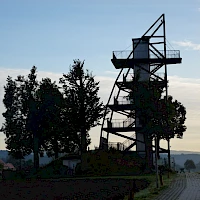Lapidary of historical landmarks
The origin of the boundary stones collected in this lapidarium goes back to the year 1557, when the first description of the Electoral Saxon forests and the surveying of the main forest areas took place.
The original Gohrischer Grenzsteinlapidarium was a private collection. From there, the forest boundary stone moved to a new location, directly at the Arboretum Gohrisch. The collection primarily shows forest boundary stones. They marked the boundaries of the former electoral or royal forest and later state forest. In particular, boundary stones that have been damaged and/or those that have been removed from their location and are no longer used can be viewed on the new one.
A total of over 2,000 historical forest boundary stones from the area of Saxon Switzerland have been recorded, inventoried and mapped. The stones in this lapidarium are intended to indicate that it is important to protect and preserve even 'relatively insignificant' cultural monuments, such as forest boundary stones.
arboretum
The area on which special trees should have the opportunity to grow into stately specimens is around 4,000 square meters. It is about those species that have held the title "Tree of the Year" in the past 30 years. These include, for example, the robinia (tree of the year 2020), a common oak (1989), a black alder (2003), a service tree (1993) or a ginkgo. The latter was even voted “Tree of the Millennium” by the Tree of the Year Board of Trustees.
The project was realized by the Gohrisch local history and mountain association, which also takes care of the area and the plants, together with the Sachsenforst. The members have also created a circular route with explanations, quiet areas and a butterfly meadow.









